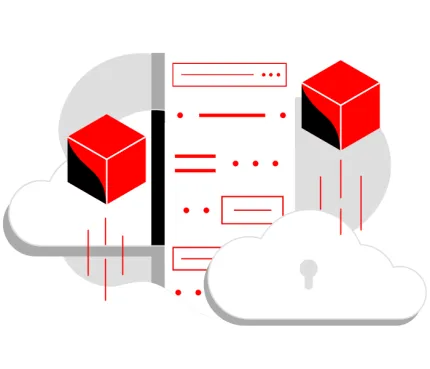We are thrilled to announce that Skopeo 1.0 has been released.
I often talk about all of the new container tools that we have developed over the last few years, and often skim over Skopeo. But Skopeo was the first one, and really has some cool features.
Skopeo is a tool for moving container images between different types of container storages. It allows you to copy container images between container registries like docker.io, quay.io, and your internal container registry or different types of storage on your local system. You can copy to a local container/storage repository, even directly into a Docker daemon.

One of the best things about Skopeo is you don’t have to be root to execute it, and you don’t need to store the images locally if you are just copying from one container registry to another. Skopeo does not require a daemon to be running to perform its operations. I believe it is a much better solution than having to run podman pull IMAGE; podman push IMAGE.
Skopeo is being used all over the world to move container images. It is used in CI/CD systems to keep container registries up to date, as well as loading up container storage for all different kinds of container servers.
History
Skopeo was originally a side project that Red Hat’s Antonio Murdaca started to view the container image JSON file stored on a container registry. Container images, whether they are Open Container Initiative (OCI) images or Docker images consist of two parts. One part is a tarball of the `rootfs` directory. This directory, which tends to look like the root file system on the linux operating system, contains all of the code and configuration files required to run an application.
The second part is a JSON file which describes the application, this is the input from the developer of the container image, how he expects the container to be run. It includes the entrypoint and cmd describing the path to the executable to start the container. It also includes content like environment variables and working directory. Basically, all of those extra fields people see in the Dockerfile definitions. These fields are not standardized as part of the OCI Image Specification.
These image tarballs can get very large, I have seen multi-gigabyte images. The problem was that if you wanted to view the image specification JSON file, the only way to do this was to do a `docker pull IMAGE; docker inspect IMAGE`. A few years ago we opened a pull request with the upstream Docker project to do a `docker inspect --remote IMAGE`, the request was rejected, because the maintainers did not want to complicate the Docker CLI. But we were told that container registries were just web servers, and we should build our own tool to pull down the JSON file. Antonio created that tool and called it Skopeo which is the Greek word for remote viewing.
Antonio figured if he was going to pull the image specification, he might as well pull the image. Once he pulled the image he figured he could push the image, and Skopeo developed into a tool that can copy container images between all different types of container storage.
Red Hat was working with CoreOS before the companies merged, and CoreOS wanted to use Skopeo to copy images to their hosts for use with their container engine rkt. But the CoreOS developers did not want to exec out to Skopeo, they wanted to call into a golang library. This led us to split Skopeo into a command line tool and a separate library github.com/containers/image. This library is now shared by many other container engines including Podman, Buildah, CRI-O.
USAGE
$ skopeo --help Various operations with container images and container image registries Usage: skopeo [command] Available Commands: copy Copy an IMAGE-NAME from one location to another delete Delete image IMAGE-NAME help Help about any command inspect Inspect image IMAGE-NAME list-tags List tags in the transport/repository specified by the REPOSITORY-NAME login Login to a container registry logout Logout of a container registry manifest-digest Compute a manifest digest of a file standalone-sign Create a signature using local files standalone-verify Verify a signature using local files sync Synchronize one or more images from one location to another
Skopeo operates on the following image and repository types:
-
Container Registries:
An image in a registry implementing the "Docker Registry HTTP API V2". docker://docker-reference. Authorization state is stored in $XDG_RUNTIME_DIR/containers/auth.json, which is set using (skopeo login).
-
Container Storage
An image located in a local containers/storage image store. Location and image store specified in /etc/containers/storage.conf.
-
Local file system
An existing local directory path storing the manifest, layer tarballs and signatures as individual files. This is a non-standardized format, primarily useful for debugging or noninvasive container inspection.
-
Docker Archive
An image is stored in the docker save formatted file. docker-reference is only used when creating such a file, and it must not contain a digest.
-
Docker Daemon
An image docker-reference stored in the docker daemon internal storage. docker-reference must contain either a tag or a digest. Alternatively, when reading images, the format can also be docker-daemon:algo:digest (an image ID).
-
Local directory with OCI formatting
An image tag in a directory compliant with "Open Container Image Layout Specification" at path.
Examples
Inspecting a repository
Examples:
$ skopeo inspect --config docker://quay.io/podman/stable | json_pp { "architecture" : "amd64", "config" : { "Cmd" : [ "/bin/bash" ], "Env" : [ "DISTTAG=f32container", "FGC=f32", "container=oci", "PATH=/usr/local/sbin:/usr/local/bin:/usr/sbin:/usr/bin:/sbin:/bin", "_CONTAINERS_USERNS_CONFIGURED=" ], "Labels" : { "license" : "MIT", "name" : "fedora", "vendor" : "Fedora Project", "version" : "32" } }, "created" : "2020-05-03T12:27:03.990489916Z", "history" : [ ... ], "os" : "linux", "rootfs" : { "diff_ids" : [ "sha256:a4c0fa2b217d3fd63d51e55a6fd59432e543d499c0df2b1acd48fbe424f2ddd1", "sha256:120e15c4fd15cb42f0fc028a5105f3923b928c3cb766afc6cbc2c14a78b49387", "sha256:f100a96598ff0e42eede39a8cd57ff85c3478f942074216572b01d1d614fc083", "sha256:dbb194061737e6970cc735cee0b2353d541f51fe12a69cffb3827cce4cdf5c25", "sha256:8dc1236d8bfbd7be7b8bf04677f5dd20fa41bbe6bd98688408071b1d4ec3ecf7" ], "type" : "layers" } }
Copying images
Skopeo can copy container images between various storage mechanisms:
$ skopeo copy docker://registry.access.redhat.com/ubi8-init docker://reg.company.com/ubi-init Getting image source signatures Copying blob 58e1deb9693d done Copying blob f544909c6b5a done Copying blob 78afc5364ad2 done Copying config a858c9c7ea done Writing manifest to image destination Storing signatures a858c9c7ea130b17bad01c858a20f4392085bcc0f25aa5eeee4b16726bed5bab $ skopeo copy docker://registry.fedoraproject.org/fedora:latest containers-storage:fedora Getting image source signatures Copying blob 3088721d7dbf done Copying config d81c91deec done Writing manifest to image destination Storing signatures
Deleting images from a registry
For example,
$ skopeo delete docker://localhost:5000/imagename:latest
Conclusion
Skopeo is a great lightweight tool to help users and administrators maintain their container image infrastructure. Although it has not received the attention that it probably deserves, Skopeo is a really terrific tool to have in your own toolbox.
The upstream release is now available, we expect to see Skopeo 1.0 in the Red Hat Enterprise Linux 8.3 release.
 Vous souhaitez en faire plus avec les images UBI (Universal Base Images) de Red Hat ?
Vous souhaitez en faire plus avec les images UBI (Universal Base Images) de Red Hat ?
À propos de l'auteur
Daniel Walsh has worked in the computer security field for over 30 years. Dan is a Senior Distinguished Engineer at Red Hat. He joined Red Hat in August 2001. Dan leads the Red Hat Container Engineering team since August 2013, but has been working on container technology for several years.
Dan helped developed sVirt, Secure Virtualization as well as the SELinux Sandbox back in RHEL6 an early desktop container tool. Previously, Dan worked Netect/Bindview's on Vulnerability Assessment Products and at Digital Equipment Corporation working on the Athena Project, AltaVista Firewall/Tunnel (VPN) Products. Dan has a BA in Mathematics from the College of the Holy Cross and a MS in Computer Science from Worcester Polytechnic Institute.
Contenu similaire
Parcourir par canal
Automatisation
Les dernières nouveautés en matière d'automatisation informatique pour les technologies, les équipes et les environnements
Intelligence artificielle
Actualité sur les plateformes qui permettent aux clients d'exécuter des charges de travail d'IA sur tout type d'environnement
Cloud hybride ouvert
Découvrez comment créer un avenir flexible grâce au cloud hybride
Sécurité
Les dernières actualités sur la façon dont nous réduisons les risques dans tous les environnements et technologies
Edge computing
Actualité sur les plateformes qui simplifient les opérations en périphérie
Infrastructure
Les dernières nouveautés sur la plateforme Linux d'entreprise leader au monde
Applications
À l’intérieur de nos solutions aux défis d’application les plus difficiles
Programmes originaux
Histoires passionnantes de créateurs et de leaders de technologies d'entreprise
Produits
- Red Hat Enterprise Linux
- Red Hat OpenShift
- Red Hat Ansible Automation Platform
- Services cloud
- Voir tous les produits
Outils
- Formation et certification
- Mon compte
- Assistance client
- Ressources développeurs
- Rechercher un partenaire
- Red Hat Ecosystem Catalog
- Calculateur de valeur Red Hat
- Documentation
Essayer, acheter et vendre
Communication
- Contacter le service commercial
- Contactez notre service clientèle
- Contacter le service de formation
- Réseaux sociaux
À propos de Red Hat
Premier éditeur mondial de solutions Open Source pour les entreprises, nous fournissons des technologies Linux, cloud, de conteneurs et Kubernetes. Nous proposons des solutions stables qui aident les entreprises à jongler avec les divers environnements et plateformes, du cœur du datacenter à la périphérie du réseau.
Sélectionner une langue
Red Hat legal and privacy links
- À propos de Red Hat
- Carrières
- Événements
- Bureaux
- Contacter Red Hat
- Lire le blog Red Hat
- Diversité, équité et inclusion
- Cool Stuff Store
- Red Hat Summit

